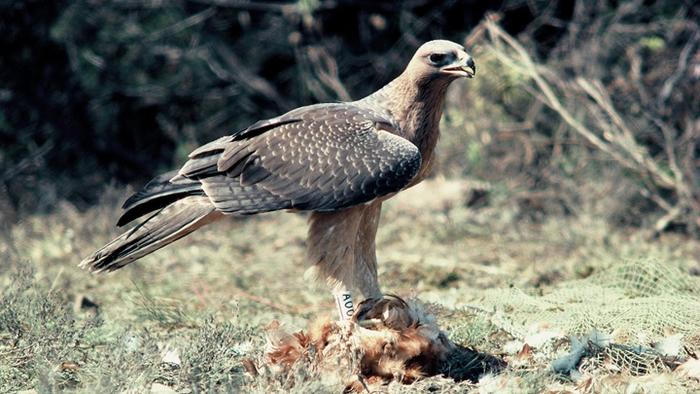
Understanding the dynamics of wildlife populations is essential for effective conservation and management strategies aimed at preserving biodiversity. The challenges inherent in field studies—which involve logistics, capturing and marking individual animals, and conducting long-term monitoring—can complicate predictions regarding the future viability of threatened species. Recent advancements in methodology for assessing demographic parameters in natural populations signal a promising development, particularly with regard to the Bonelli’s eagle, a species that has faced significant population declines. This bird of prey serves as a vital case study for understanding conservation methods, thanks to innovative protocols developed by the Conservation Biology Group at the University of Barcelona.
The new methodology introduced is not only efficient but also flexible, making it applicable to a range of birds of prey and other territorial species. It focuses on four primary demographic processes that contribute to population changes: births, deaths, emigration, and immigration. By accurately identifying these processes, conservationists can obtain a holistic view of the factors influencing a species’ population dynamics. This understanding allows targeted strategies to be developed, aiming either to enhance reproductive success, decrease mortality rates, or manage migratory patterns.
The findings of this innovative research were published in the prestigious journal Ecological Applications, authored by a collaborative team of experts from the University of Barcelona and the University of Girona. The study emphasizes the significance of long-term monitoring, exemplified by the nearly fifty years of dedicated research on the Bonelli’s eagle population in Catalonia. This extensive period of study has provided the critical data necessary to develop and refine methods for effective conservation.
A significant advance within the study is the implementation of the Integrated Population Model (IPM), which allows researchers to consider immigration as a vital demographic factor. By employing IPMs, more robust and reliable estimates of population dynamics can be garnered, integrating various data sources—ranging from population censuses and ringing data to observations gathered during the breeding season. This interdisciplinary approach greatly enhances the accuracy of demographic assessments, providing insights that were previously difficult to ascertain.
In examining the Bonelli’s eagle populations specifically, the new methodology highlights a steep decline during the 1980s and 1990s. However, this decline was not without a silver lining; the influx of immigrant individuals from healthier populations in other regions appears to have mitigated a potentially catastrophic collapse. The analysis recognizes that while the population has made significant strides towards recovery since 2010, the issue complexity extends beyond mere numbers or immigration patterns. The role of floater individuals—non-breeding eagles without established territories—has been shown to play a vital regulatory function, an aspect not previously well understood within wild animal population studies.
The transition from a declining to a recovering population illustrates a crucial turning point in the conservation of Bonelli’s eagles. Researchers have determined that a greater number of floaters can bolster the breeding population, contributing significantly to overall population stabilization and growth. The study surmises that a flourishing floater demographic provides the necessary support to sustain breeding populations during periods of environmental stress, thereby averting further population declines.
Yet, despite these positive strides, the situation for the Bonelli’s eagle remains precarious. Risks associated with accidental mortality—such as electrocution from power lines, drowning, and collision with man-made structures—persist. Current conservation efforts include rectifying hazardous power infrastructures and boosting habitat conditions, yet much work remains to be done. Strategic cooperation among various stakeholders, including researchers, land managers, and local communities, is imperative for the sustained recovery of this species.
Furthermore, there is a call for an integrated approach to land use that prioritizes biodiversity. This includes reducing urban sprawl, limiting the construction of infrastructure, and encouraging sustainable agricultural practices that also benefit local wildlife. The need to enhance conservation measures is underscored further by ongoing threats to the habitat of the Bonelli’s eagle, alongside a broader biodiversity crisis that risks numerous species.
Over the years, scientific monitoring—such as tracking breeding territories—has become increasingly crucial. However, little is known about the floater population, and understanding its dynamics is essential for forging conservation strategies that will withstand future ecological challenges. It is vital to discern how population dynamics evolve within a changing environmental context, especially when considering a growing biodiversity crisis that afflicts various species.
This year marks fifty years since the first Bonelli’s eagle was tracked in Catalonia, and this long-term research has been instrumental in alerting conservationists to the species’ threats and facilitating the implementation of essential conservation measures. Recent collaborative efforts have led to the correction of power lines and improvements to habitats, significantly influencing the species’ recovery. Such work reflects the importance of collaborative efforts, highlighting how public organizations, private entities, research institutions, non-profits, and the general public can come together to foster the conservation of endangered species.
As we continue to gather insights from long-term studies, the knowledge accumulated over the decades serves not just to inform current conservation efforts but also to shape the future of Bonelli’s eagle and other endangered species. Continuous monitoring and research into basic biological aspects—ranging from life cycles to land use—remain critical for ensuring the conservation of the Bonelli’s eagle in Catalonia and beyond.
In summary, the revelations regarding the dynamics of the Bonelli’s eagle population serve as both a cautionary tale and a triumph of conservation science. As recovery unfolds, the need for adaptive, informed, and collaborative approaches to wildlife management cannot be overstated, ensuring that both territorial and non-breeding populations are safeguarded against further decline in a rapidly changing world.
Subject of Research: Animals
Article Title: Fall and rise of a threatened raptor: Unraveling long-term population dynamics with spatially explicit integrated models
News Publication Date: 11-Mar-2025
Web References:
References:
Image Credits: Credit: Joan Real – UB Conservation Biology Group
Keywords: Endangered species, Conservation biology, Ecology, Population dynamics, Bonelli’s eagle
Tags: bird of prey conservation strategiesBonelli’s eagle recoverydemographic parameters in wildlifeemigration and immigration in wildlifeenhancing reproductive success in conservationfactors influencing population dynamicsinnovative conservation methodologieslogistics in field studieslong-term monitoring of wildlifemanaging mortality rates in threatened speciesthreatened species conservationwildlife population dynamics





